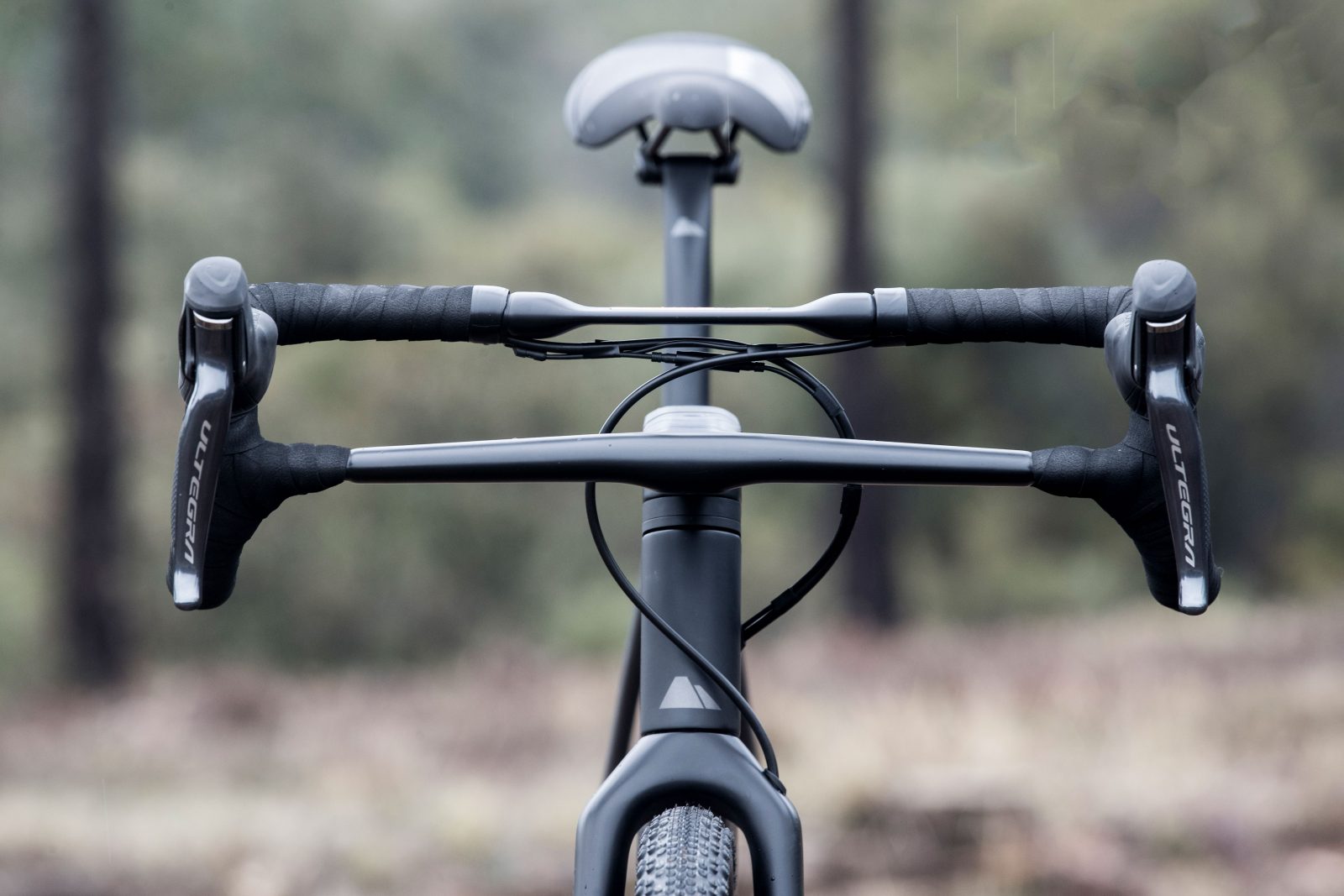There were two conferences going on in the beachfront hotel in Nice, one weekend at the end of February. The World Symposium on Pulmonary Hypertension and a Canyon gravel bike launch. Apparently pulmonary hypertension symptoms include shortness of breath and an increased heartbeat. It takes something pretty unusual to illicit these responses from a group of jaded hacks, but walking along the corridor of the hotel, I stopped in my tracks. What. The?
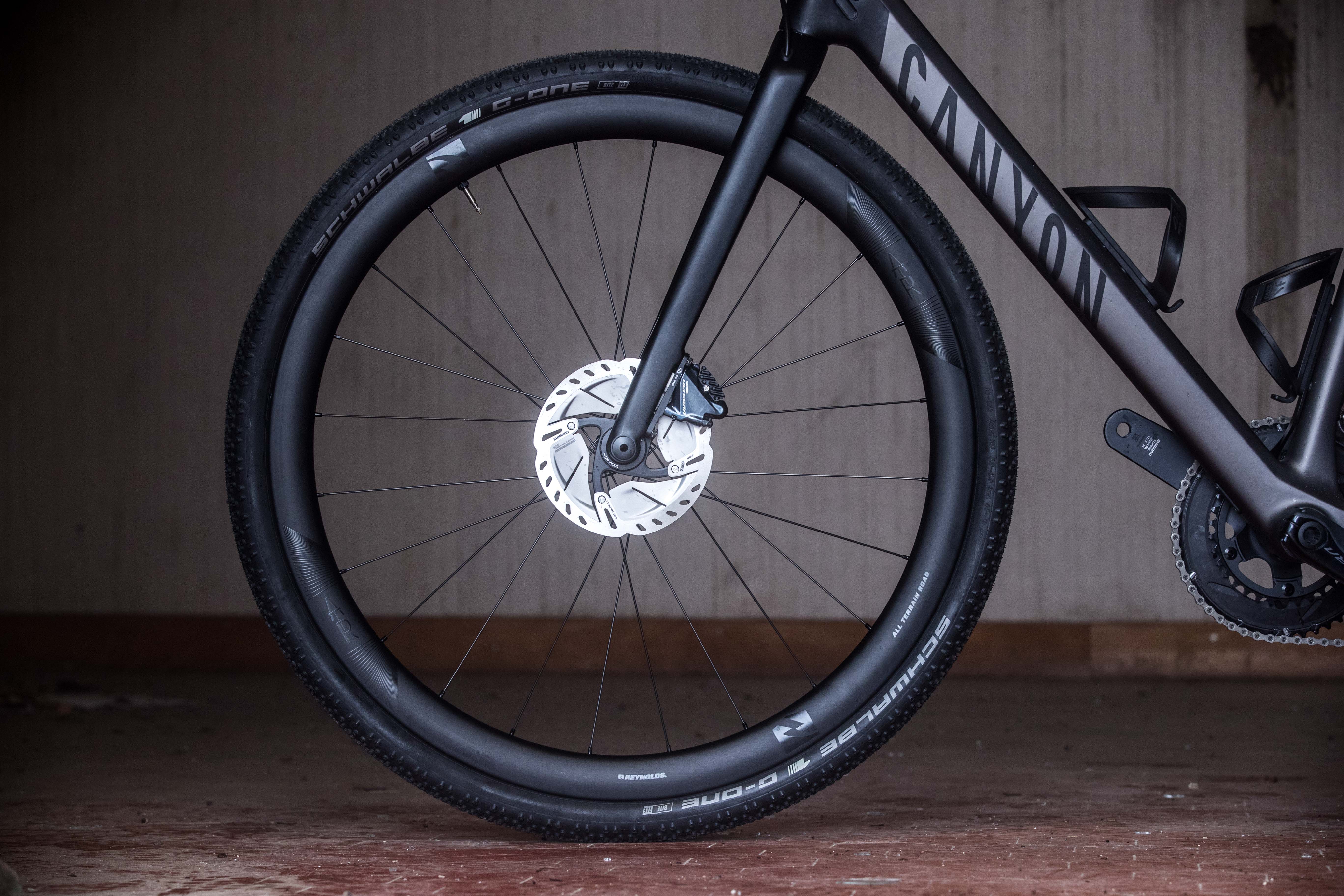
Photo Credit: Markus Greber
Gap in the range
Lets keep you in suspense a little longer, hey? Canyon has been working hard on its drop-bar off road range over the last couple of years. The Inflite was its first out and out race bike, and we were hugely impressed by it. Gravel bike it was not though. While it would be perfectly happy on long days out, it wasn’t designed to optimise that kind of riding.
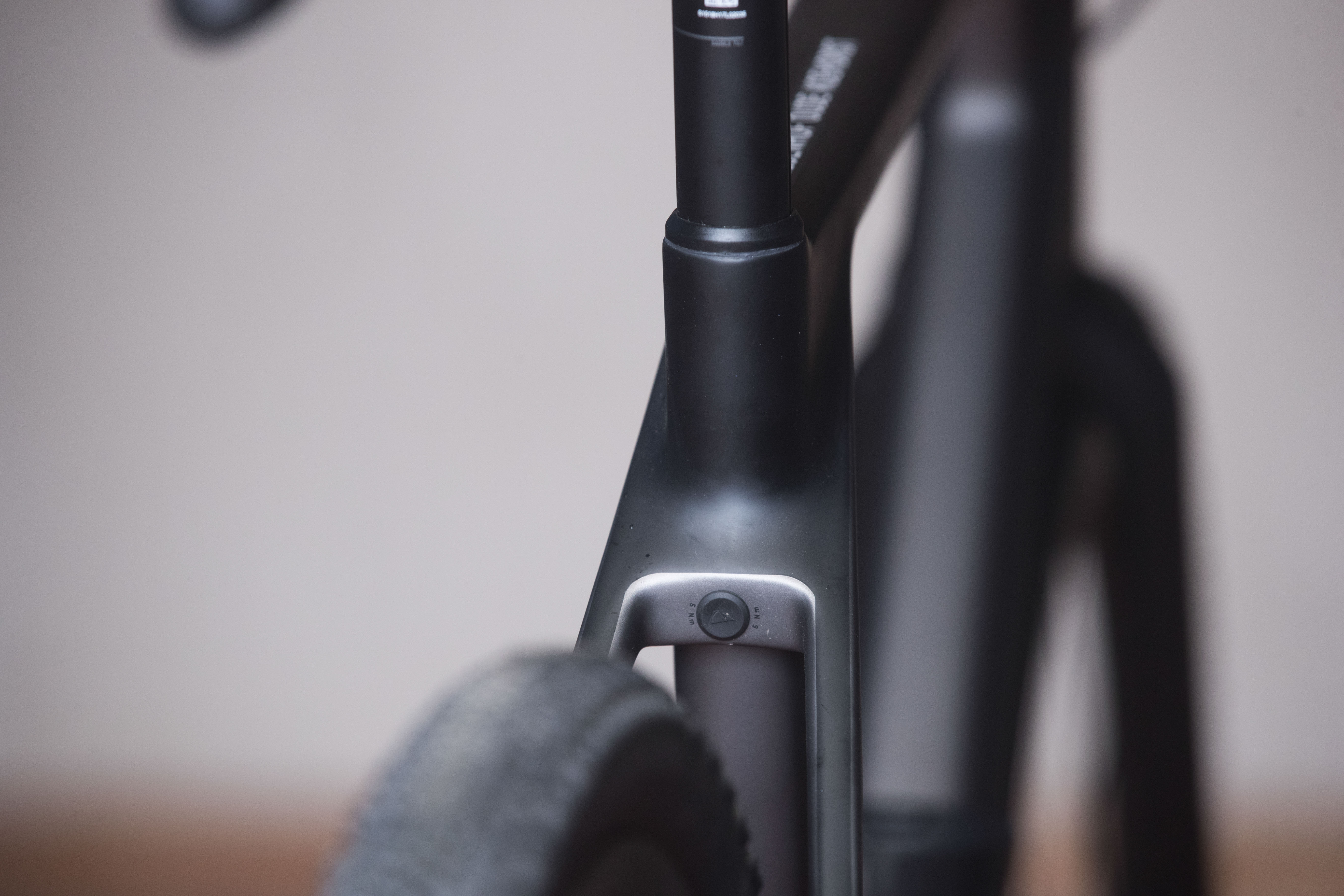
Photo credit: Markus Greber
It was therefore little surprise that Canyon would want to fill the obvious space in its range, particularly as the popularity of gravel bikes is growing over here in Europe, and as the brand becomes available in the States.
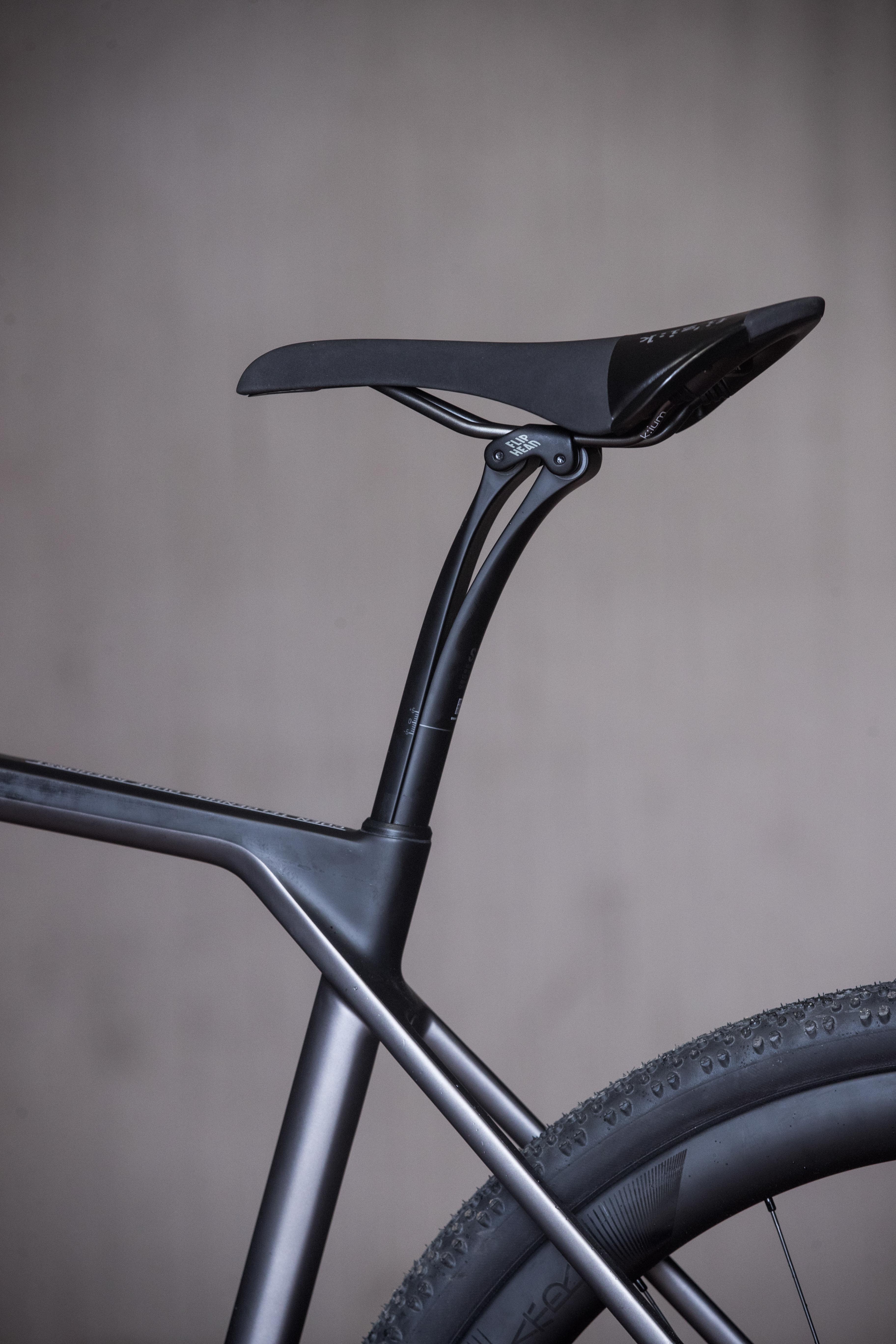
Photo Credit: Markus Greber
The Grail is the bike to do that. The German company describe its perfect gravel bike as nimble on the smooth and stable on the rough – makes sense. Starting from first principles, the aim was to have a bike that would be quick enough to take along to your regular club road rides, but capable of much much more off-road.
The Grail
There’s little in that introduction to hint at how the Canyon designers took a sideways look at tackling the same design challenge that every other bike manufacturer has been grappling with over the last few years.
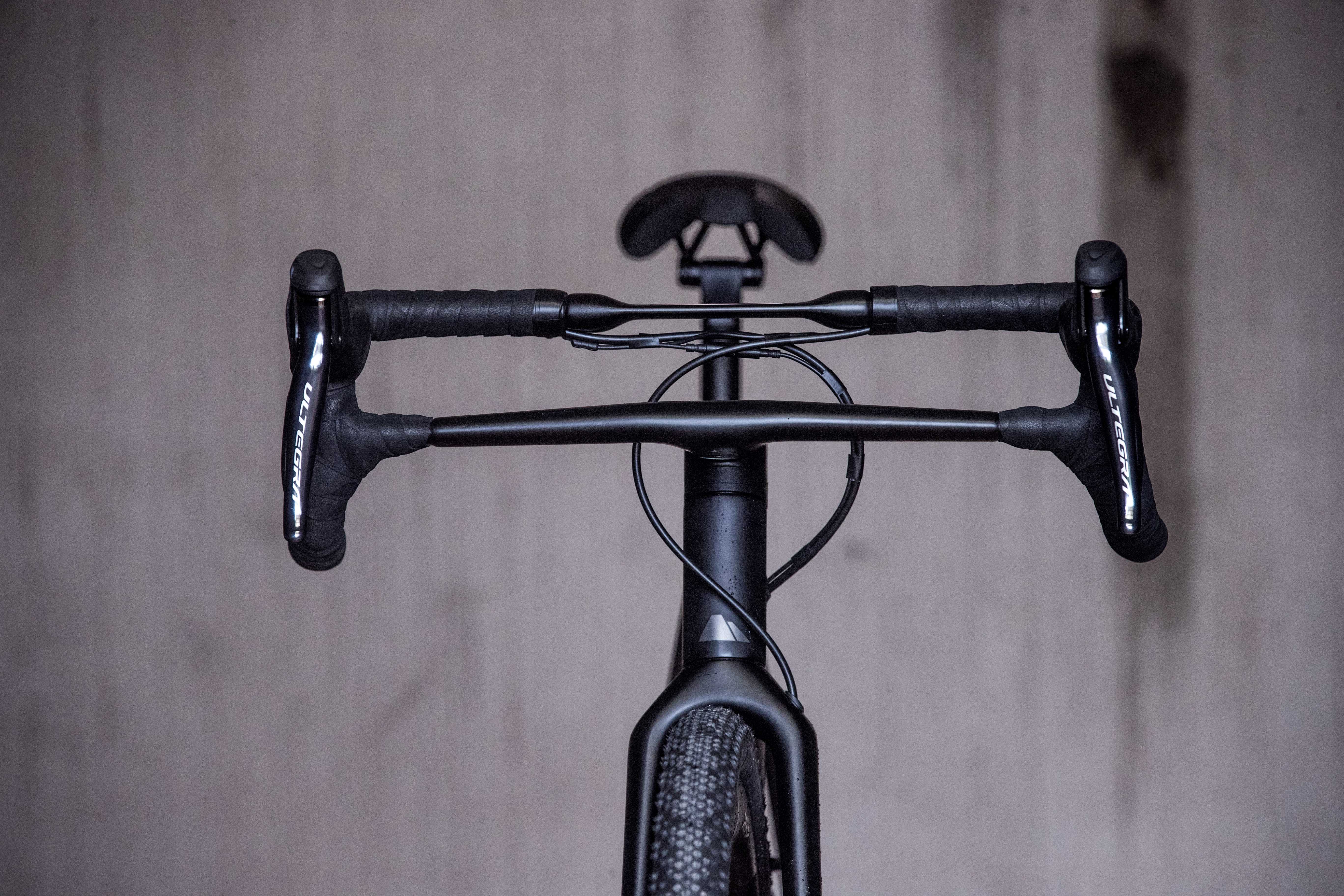
Photo Credit: Markus Greber
Not ones to fear change or be unwilling to develop their own solutions to perceived problems, the Canyon designers have developed the Grail as an entire package. This isn’t a frameset with the usual components bolted on, but a ground-up redesign… and it tells. It takes a few minutes to digest the alien looking lines, and the obvious wild bars. Just what the hell is going on there?
Hover Bar
Lets start at the most obvious feature. Those bars… or more accurately, integrated bar and stem. Why? Comfort is the short answer. The longer explanation is the inspiration behind the Hover Bar came after the Canyon engineers realised a fundamental paradox in conventional handlebar and stem layouts. The bar is at its stiffest closer to the stem and is its most compliant furthest away, on the drops. These attributes contradict what those parts of the bar are actually for – sprinting or descending on the drops you want extra stiffness for more efficient power transfer and direct handling; while cruising with hands on the tops is when extra compliance is desired.

Photo Credit: Markus Greber
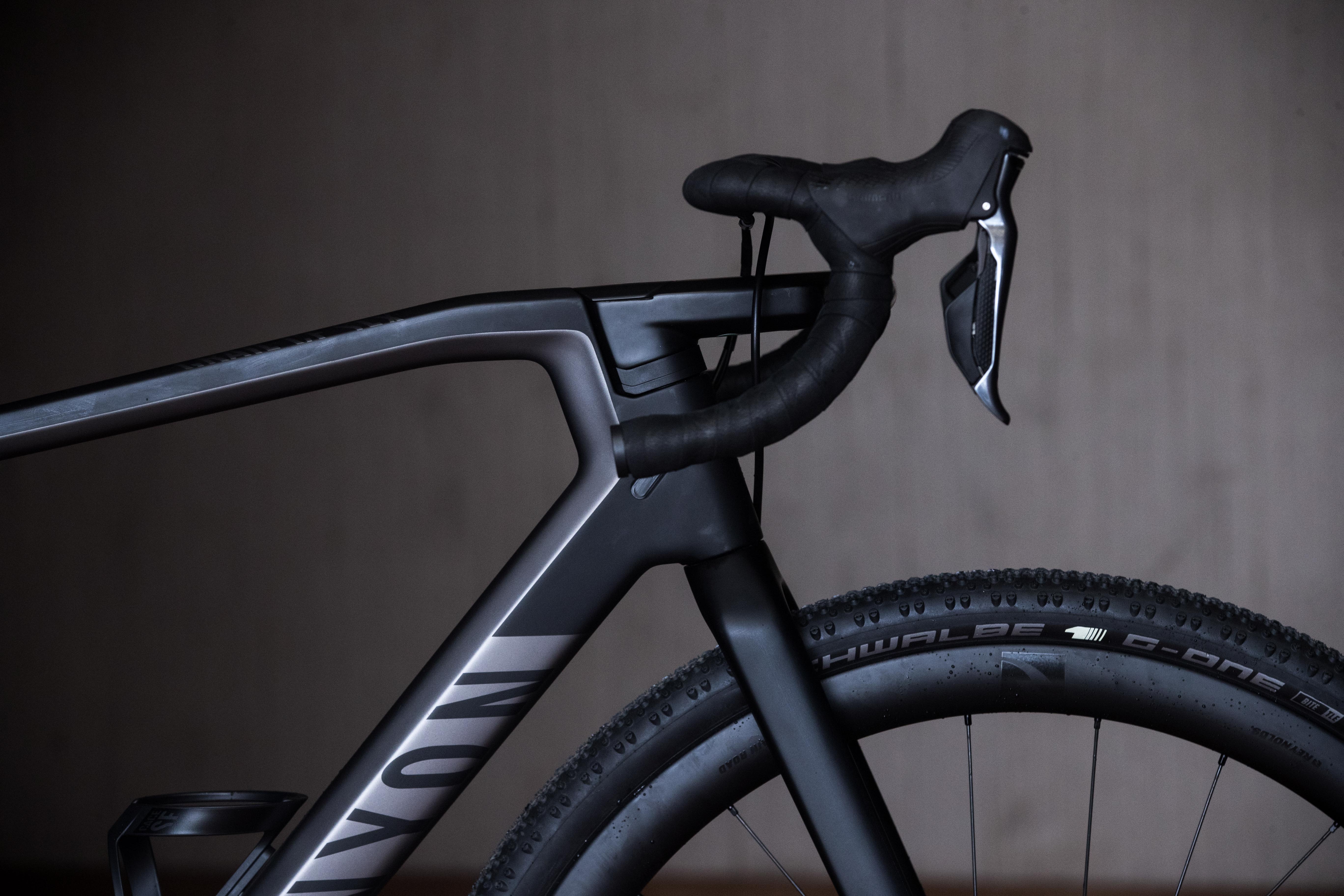
Photo Credit: Markus Greber
The bars measure 440m wide on a medium, with an equivalent stem length of 75mm (which is compensated for by a longer than normal top-tube).
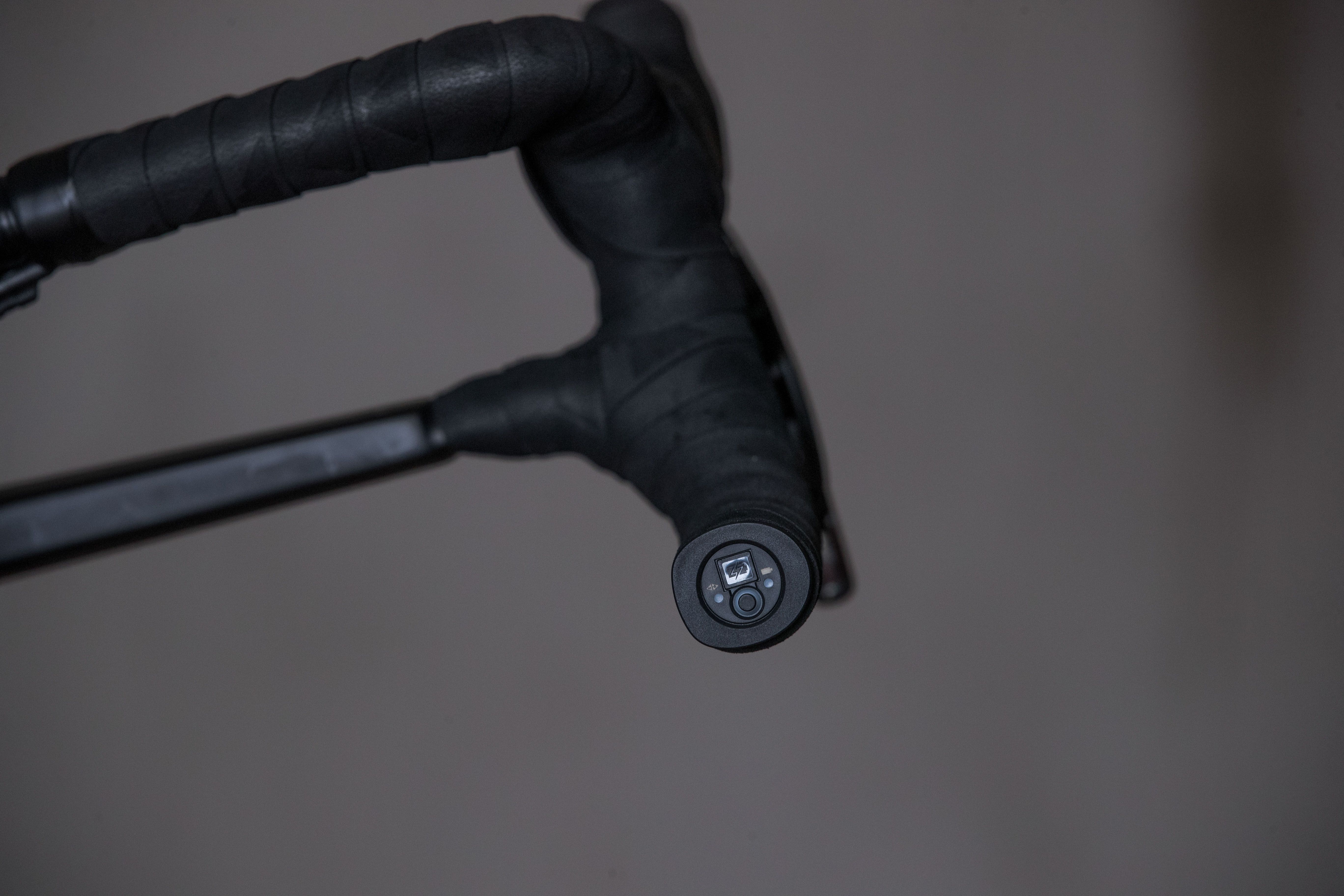
Photo Credit: Markus Greber
Want to know more? Check out Tom’s first ride report.

While they were at it, those clever designers made the most of the properties of carbon fibre and have shaped the profile of the bars “tubing” to make it as ergonomic as possible, from flat on the hover section through to almost square at the end of the drops. Finally, the end of the drops now holds a Di2 junction box in top end models.
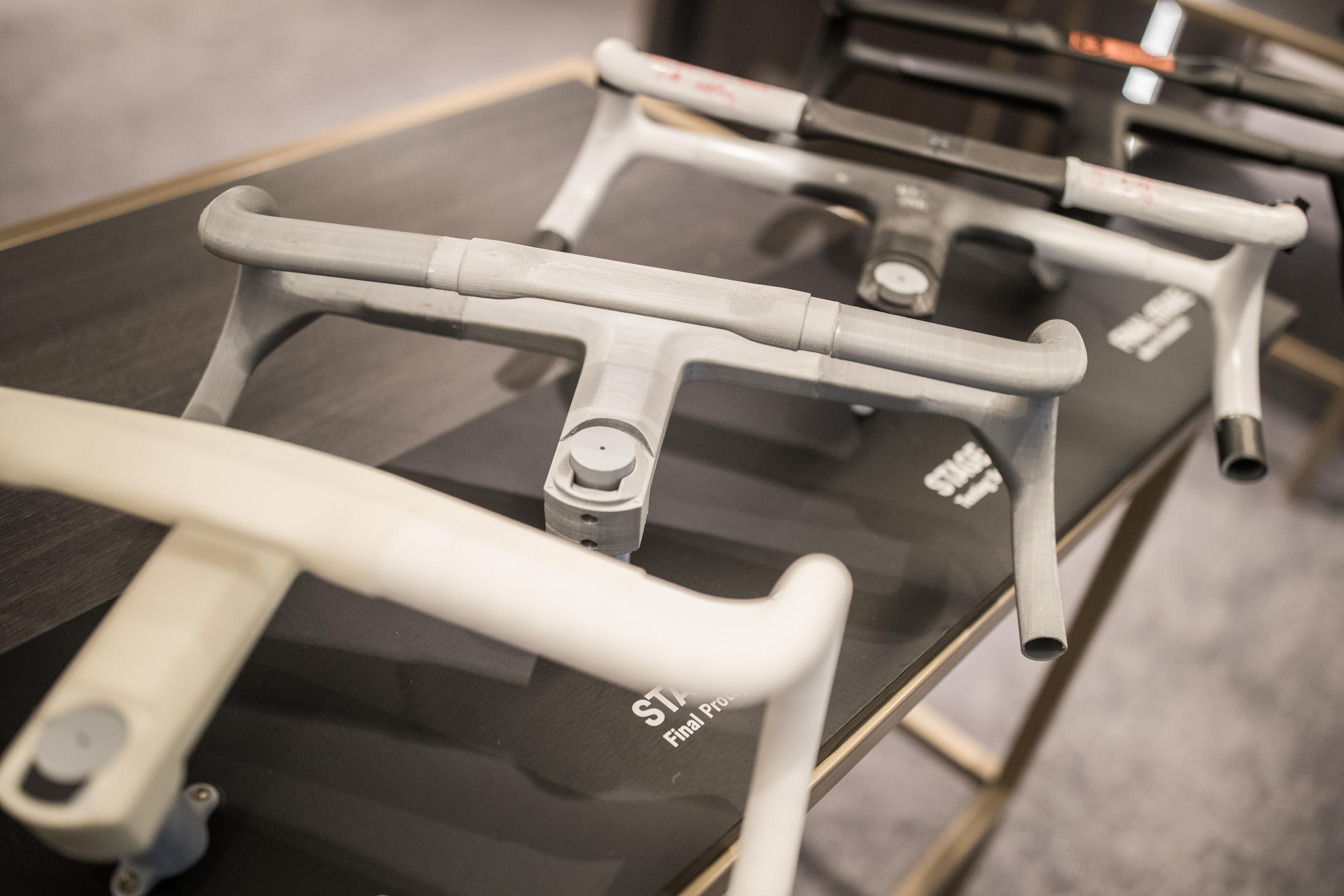
Photo Credit: Markus Greber
Carbon flex at both ends
A few hundred words down and we’ve not got beyond the handlebars. Crazy times. The seatpost is equally impressive, but those who are familiar with Canyon’s road range will already recognise it. The carbon VCLS 2.0 seatpost acts like a leaf spring, giving fore-aft flex, while keeping the saddle at the same angle.

On to the actual frame
In comparison to the bars, the frame is relatively conventional. It boasts plenty of clearance, with room for 42mm 700c tyres. There are lots of nods to practicality with hidden guard mounts and a chain suck plate. All the cables are internally routed and the front triangle is large enough to hold a good sized frame bag (more on that later). A closer look reveals something a little funky going on with the dropped head tube and slightly hunched top tube, designed to integrate fully with the Hover Bar and create a smooth transition between the two.

Photo Credit: Markus Greber
Canyon has brought across its MTB knowledge and applied it to gravel, using a longer top tube to create a stable handling bike, a short stem to compensate and slackening out the front end slightly to avoid any twitchy steering implications.
Most remarkable is the frame’s weight. Coming in at 830g for the top of the range SLX model, it is probably one of, if not the lightest production gravel frame out there at the moment.
Fit
The Grail comes in seven sizes, ranging from 2XS to 2XL, with the smallest two bikes running 650b wheel size. Canyon’s thinking is this allows the bikes to retain the same ride feel without compromise simply to squeeze big wheels into a very small frame.
As well as creating a new bar, Canyon has also developed its own way of measuring stack and reach – mainly to accommodate the implications of having a much higher bar position than other bikes. It’s new approach, conveniently called Stack & Reach+ takes the centre of the top of the handlebar as the measuring point instead of the head tube. As with conventional stack-to-reach, the lower the stack & reach+, the more aggressive the resulting rider position. There is some sense to using this approach on more conventional bikes as well, as it takes into account the difference a 150mm negative rise stem would make versus an 80mm riser stem. It does mean a bit of head scratching when initially comparing your current bike with a new Grail though. Canyon has assured us that there will be comprehensive guidance on their website as you go through the process and their 30 day return policy will always stand.
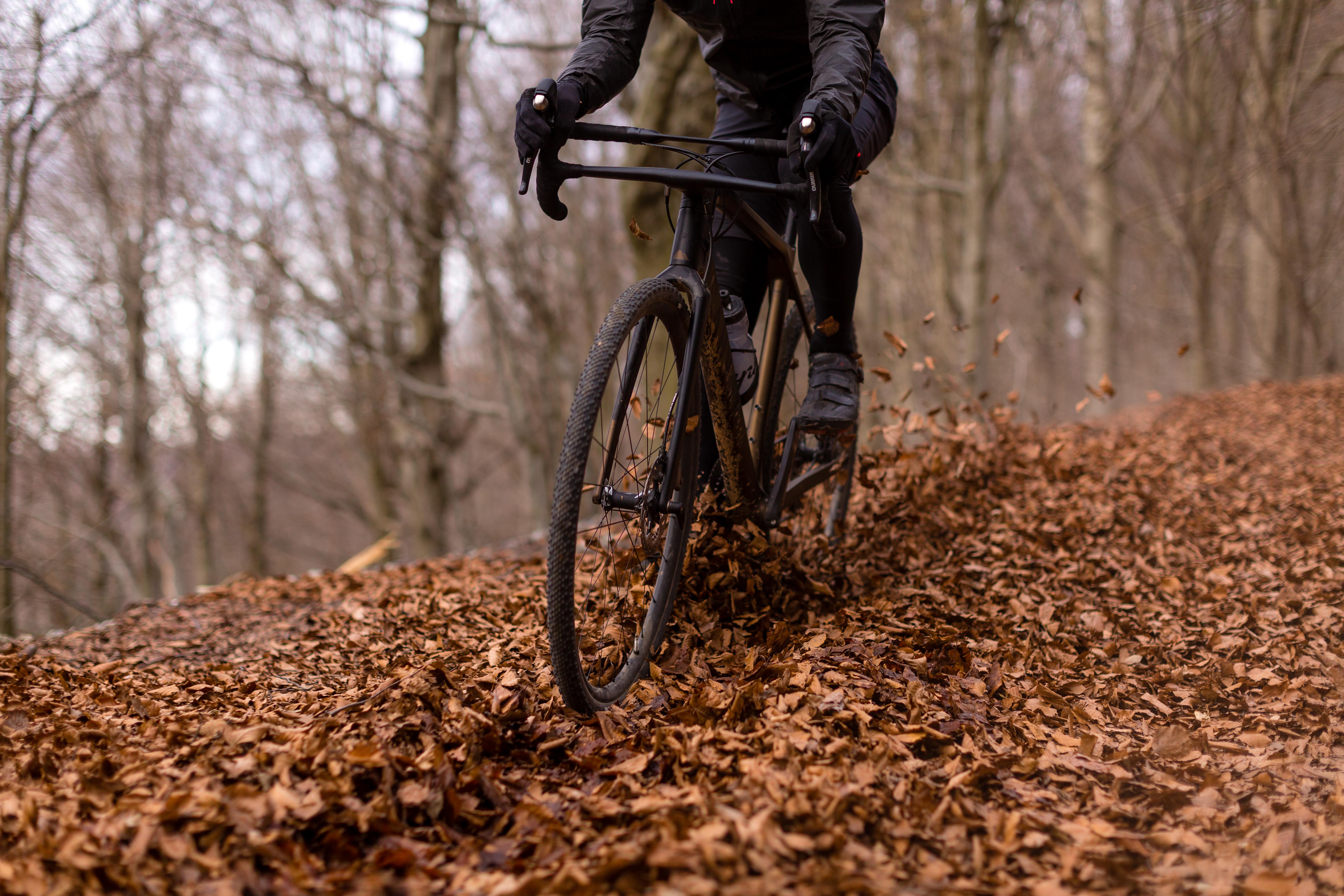
One interesting approach from Canyon is that the “slammed” look from top tube to stem is achieved when the Hover Bar is at its highest position. This was a deliberate choice by the designers, who didn’t want customers dropping the bars to an uncomfortable position purely so the bike looked as clean as possible. There is 15mm of adjustment, with spacers that will sit above the stem if you wish to lower the front end. The downside is obviously that the clean interface will be lost.
Bikepacking
Canyon has spent a bit of time thinking through what the bike might be best used for and reckon a decent number of the bikes owners will be keen to head out on longer trips. To help them out, the company has worked with fellow Germans, Topeak to design an integrated range of luggage.
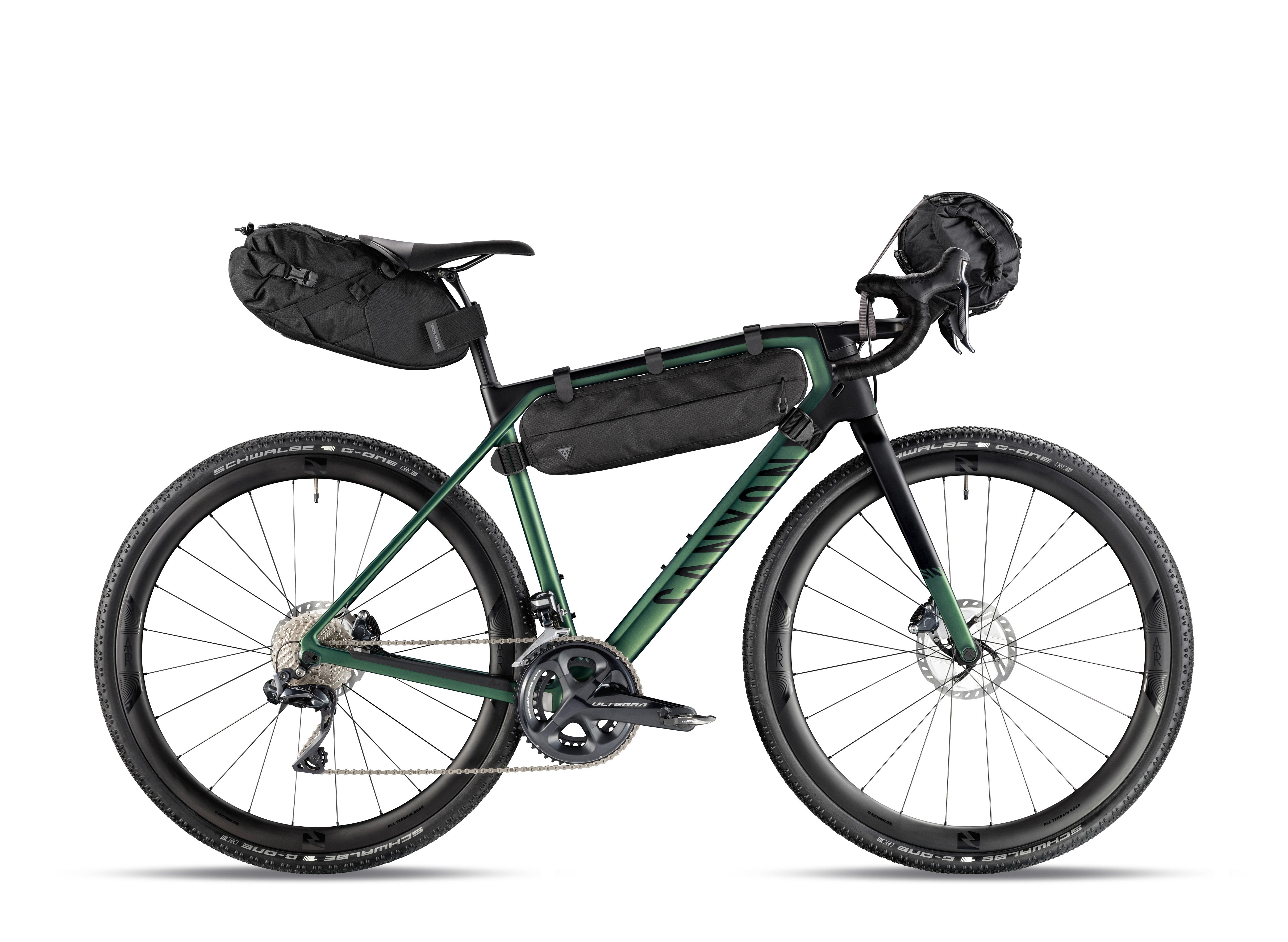
This consists of a saddle bag, frame bag and bar roll, each designed to fit the bike perfectly.
The range
Eventually the Grail will be available in both carbon and alloy, but for the time being, just carbon models are available. There are two framesets – the CF SL and CF SLX. The SLX is the lighter of the two, with the SL still only weighing in at a decidedly unportly 1040g.
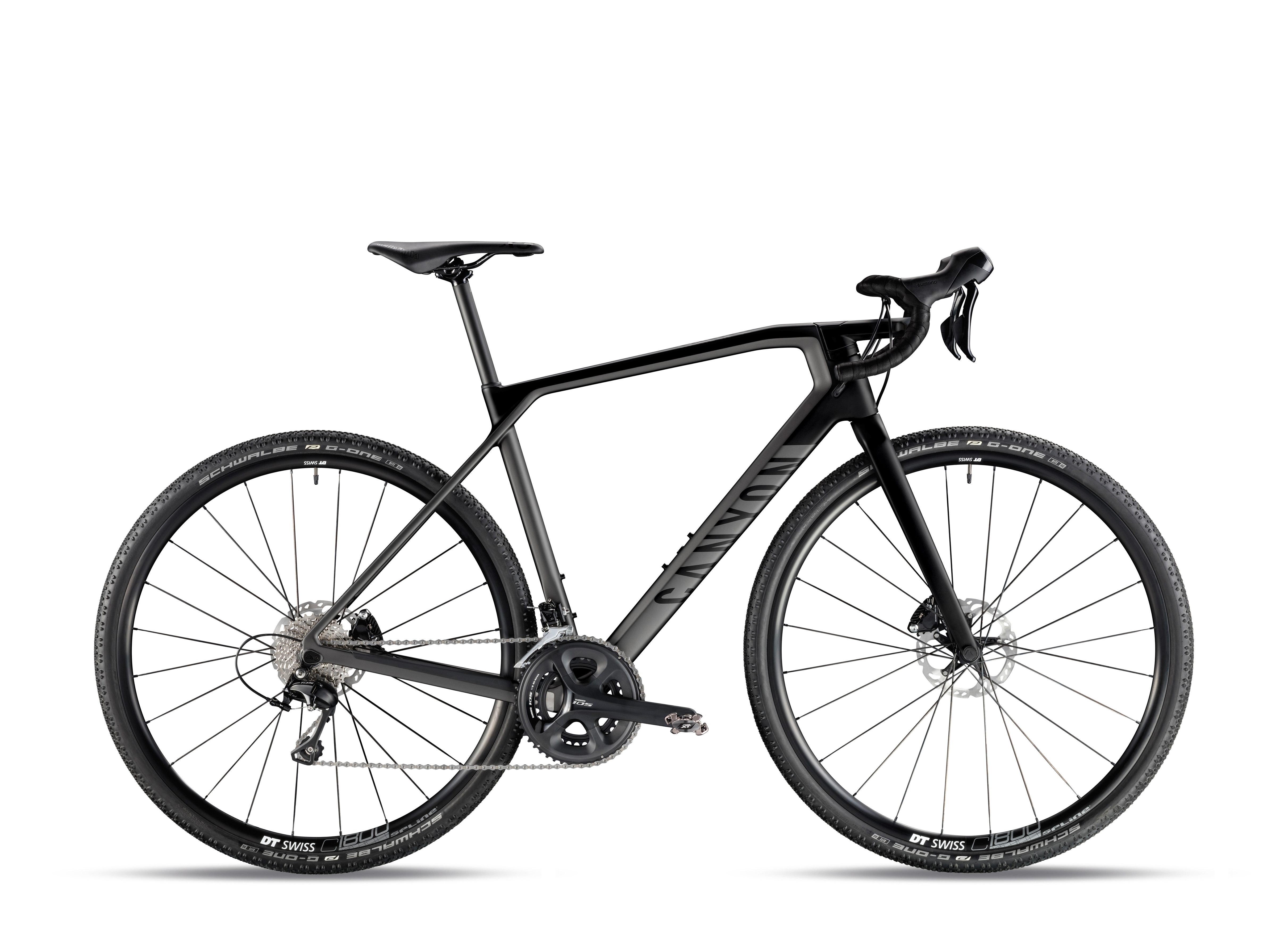
There are five build levels, plus a women’s specific model – interesting given the small sizes that all frames go down to. There are a few consistencies across the whole range. Firstly, all bikes run full Shimano gearing and braking. That also means that all bike run a double chainset up front. Canyon feels that for true versatility both on and off road, a double is necessary, all when we talked during the launch, they did say they would see how much appetite there was for a single ring option in the future.
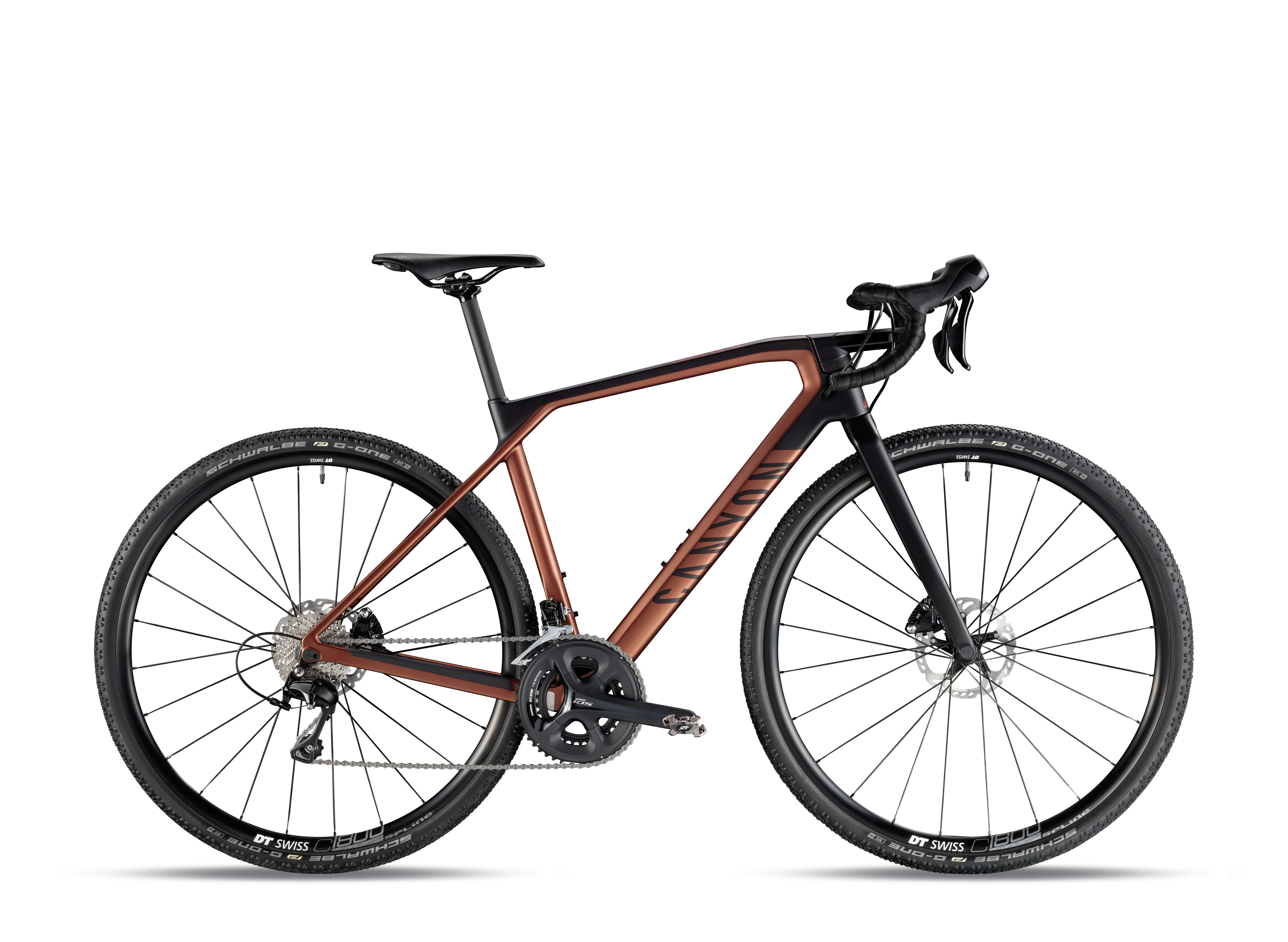
All builds use the new Schwalbe G-One Bite 40mm tyre, specifically developed between Canyon and Schwalbe for the Grail. It has a fast rolling profile, with slightly more pronounced side blocks than the classic G-One profile. The top two bikes in the range both come with Reynolds Assault ATR carbon wheels.

If you were wondering, the top spec Grail CF SLX 8.0 Di2 builds up to an astonishing 8.2kg.
Pricing
As you’d expect with Canyon, full package prices are very competitive, helped by their direct sales approach. They begin at £1999 and top out at £4199. Alloy versions will presumably have a lower starting price point.

- Grail CF SL 7.0 – Shimano 105– £1999
- Grail CF SL 7.0 WMN – Shimano 105 – £1999
- Grail CF SL 8.0 – Shimano Ultegra – £2349
- Grail CF SL 8.0 Di2 – Shimano Ultegra Di2 – £2999
- Grail CF SL 8.0 SL – Shimano Ultegra – £3229
- Grail CF SLX 8.0 Di2 – Shimano Ultegra Di2 – £4199
BUT WHAT DOES IT RIDE LIKE?
Yeah, yeah, yeah. Funky bars, something about some other design stuff. You want to know how the bike actually rides. Are the bars all form no function, or just a novelty? Check out Tom’s first ride to find out.
Full Disclosure: Canyon covered the cost of Tom’s trip to Nice cover the bike launch
